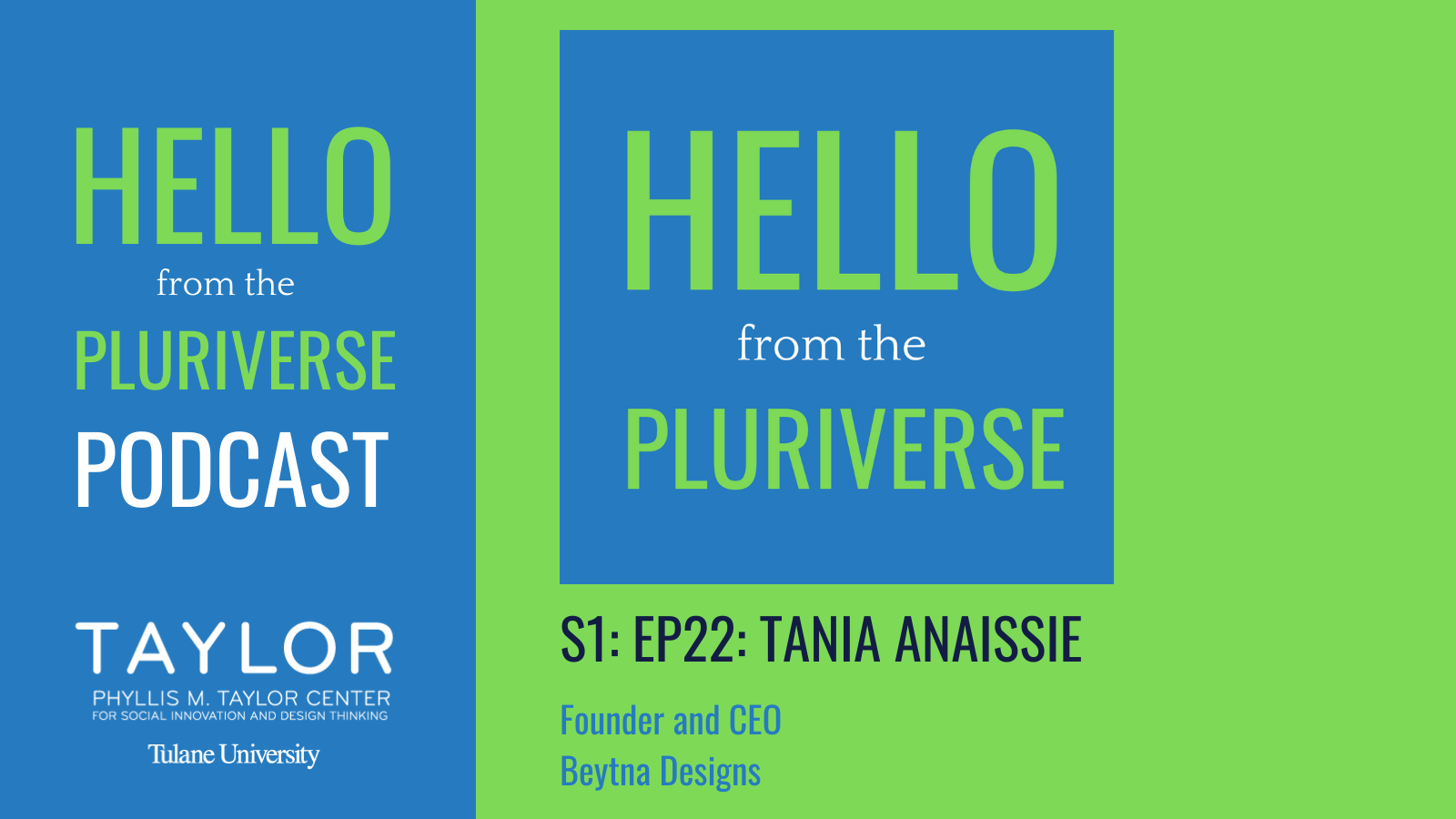“If we’re going to do equity work, we can’t be doing this TO people; we need to do this WITH people.”
Tania Anaissie is the founder and CEO of Beytna Design, an Equity Design organization that supports socially minded leaders to design in new ways to create a more equitable world, part of this involves designing for liberation, or as Tania has coined it “Liberatory Design”. She is a proud graduate of Stanford University’s Product Design program and she is also faculty at The National Equity Project and was a Lecturer at Stanford.
Connect with Tania Anaissie:
Twitter: @anaissie
Pluriverse Publication Chapter: Tania Anaissie
Written by Megan Hart and edited by Natalie Hudanick.
Download a PDF Layout of the Tania Anaissie chapter of the Pluriverse Publication.
Tania Anaissie is an Arab-American who grew up in Arkansas with two immigrant parents. When describing her childhood, she said “it was tough growing up there…people did not treat us well…to put it kindly.” Tania attributes her initial interest in design work to the struggles of her childhood. She explained that living through the discrimination she faced enabled her to understand the systems that our society has in place and how backwards many of them are. Tania is so passionate about her design work because her difficult childhood helped her recognize that people’s health, wellness, and lives are on the line when it comes to dealing with these systems of inequality.
Tania also acknowledged her privileges of being able to attend Stanford, speaking without an accent, and being light-skinned. She understands that with these privileges comes power and she must balance these two different aspects of her identity in order to effectively design with others. Tania talked a lot about the importance of acknowledging her identity in her work and said that, “one of the most critical moments for me was when I first understood the role of my unique experience and identity.” Once she was able to acknowledge her own privileges and disadvantages, she leaned into her identity and used it to help her solve problems with others.
The ability to attend Stanford for undergraduate opened the door for Tania in many other ways. After graduating, she spent some time doing design work in Berlin and eventually moved back to Stanford to teach at their design school. While teaching at Stanford she began to feel a call toward social justice work. Tania explained that she wanted to do work “that was based on my own lived experience and what I was seeing in the world.” While doing work in Cape Town, South Africa around the same time, Tania felt that ethically, she did not agree with many aspects of her work and could not get past the power dynamics and inequity she was witnessing. This prompted the beginning of her design firm, Beytna Design. Beytna Design focuses on applying design thinking concepts to solve equity problems within government, education, health, and campaign sectors. Her clients are striving to create some sort of change toward equity, either internally as an organization or externally because of the groups the clients are serving and interacting with. She helps them to do this by creating awareness about equity through training programs while simultaneously working with individuals in the organization to create a solution.
Tania’s favorite saying about design is that “If we are designing in status quo ways, we are going to create status quo outcomes.” With this, she acknowledges that equity work cannot be done to people but rather with people. “Liberatory Design,” meaning design for liberation, is a framework Tania co-created with Victor Cary, David Clifford, Tom Malarkey, and Susie Wise. This type of design emphasizes the importance of having conversations about equity throughout the design process. Tania uses the conversations around equity to dig into people’s identity and power and look at the historical context of the issue at hand.
When discussing the prevalence of ambiguity in design work, Tania explained that the more experience a person has in design, the more they are able to trust the process. She understands that new designers struggle to use ambiguity as a tool to success, but she advised that we push ourselves to work past this until we can get clarity. Tania also explained that design work must be ambiguous because if it was obvious, then the problem would already be solved. Lastly, she explained that designing is not a solo task and when a designer hits a dead end, he or she can always ask for help and look for other tools to continue their project.
- Instagram: @hellopluriverse
- Twitter: @hellopluriverse
- Email: taylor@tulane.edu
- Subscribe to our newsletter
The Hello from the Pluriverse Podcast aims to open up and create a space to have conservations about the pluriversality in design.
This podcast is a project of the Design Thinking for Social Innovation Program at the Phyllis M. Taylor Center for Social Innovation and Design Thinking at Tulane University.
Executive Producer: Lesley-Ann Noel, Ph.D
Sound editing
- Max Esperance
- Lavonte Lucas: xn--vonni-fsa.com, Instagram: @vonnieradass, Twitter: @vonnieradass
Hello from the Pluriverse 2020-2021 Student Team
- Max Esperance – Podcast lead
- Natalie Hudanick and Michaeline Anglemire – Editors
- Tiwani Oseni – Communications
Hello from the Pluriverse 2019-2020 Student Team
